

Last updated on

Are you confident that the content you’re publishing on your website is completely original?
Avoiding plagiarism is crucial for content creators, educators, businesses, and others to maintain credibility and prevent legal issues, among other concerns.
Although Copyscape has long been a popular choice for checking plagiarism, the market now offers a wide array of tools with diverse features tailored to specific needs.
This article covers the fundamentals of plagiarism—its definition, importance of checking, methods for verification, and steps to take if your content is plagiarized. Additionally, it explores alternatives to Copyscape that can help ensure your content remains distinctive and valuable.
Plagiarism occurs when you take someone else’s work, whether it’s their words or ideas, and present it as your own without giving credit.
Plagiarism can vary from directly copying someone’s work to closely paraphrasing it without acknowledging the original source. In some cases, it’s deliberate, but at other times, the person may not even realize they’re committing plagiarism.
Regardless of the intent behind it, plagiarism is a common issue that can be challenging to address – but the initial step involves detecting it.
The consequences of plagiarism can be significant – it can damage your credibility, harm your reputation, and potentially lead to legal consequences.
Here are a few reasons why it’s crucial to check for and avoid plagiarism:
There are several methods available to check for plagiarism:
While detecting direct plagiarism in text is relatively straightforward, identifying paraphrased content or ideas presents a greater challenge.
Despite the variety of tools discussed in this article, it’s important to note that no tool is flawless.
Given the vast volume of content continuously generated and published online, conducting a comprehensive check is nearly impractical, contributing to the ongoing challenge of plagiarism detection.
If you find that someone has plagiarized your content, here are steps you can take:
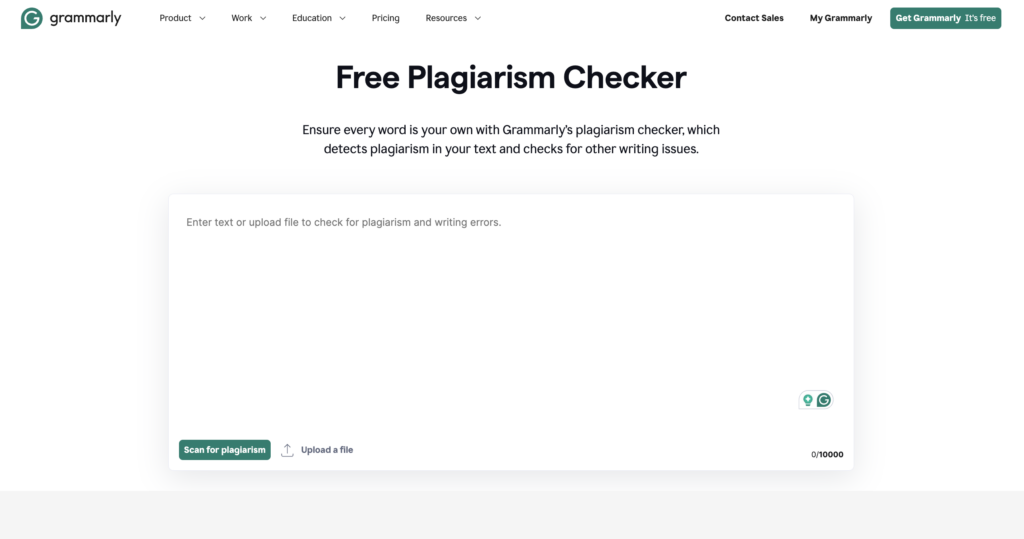
While Grammarly is widely recognized for its spell-check and grammar correction features, it also includes a valuable plagiarism checker tool.
Grammarly’s free plagiarism checker assesses your text (up to 10,000 characters) against extensive academic databases and billions of web pages. It promptly generates a report indicating whether any content matches existing sources.
In addition to plagiarism detection, Grammarly’s tool identifies grammar, spelling, punctuation, conciseness, readability, and word choice issues, offering comprehensive writing feedback.
For enhanced capabilities, Grammarly offers a Premium version of the tool. This upgraded option highlights specific problematic sentences, provides source information, offers deeper writing insights, and assigns an “overall originality score” to your text.
Cost:
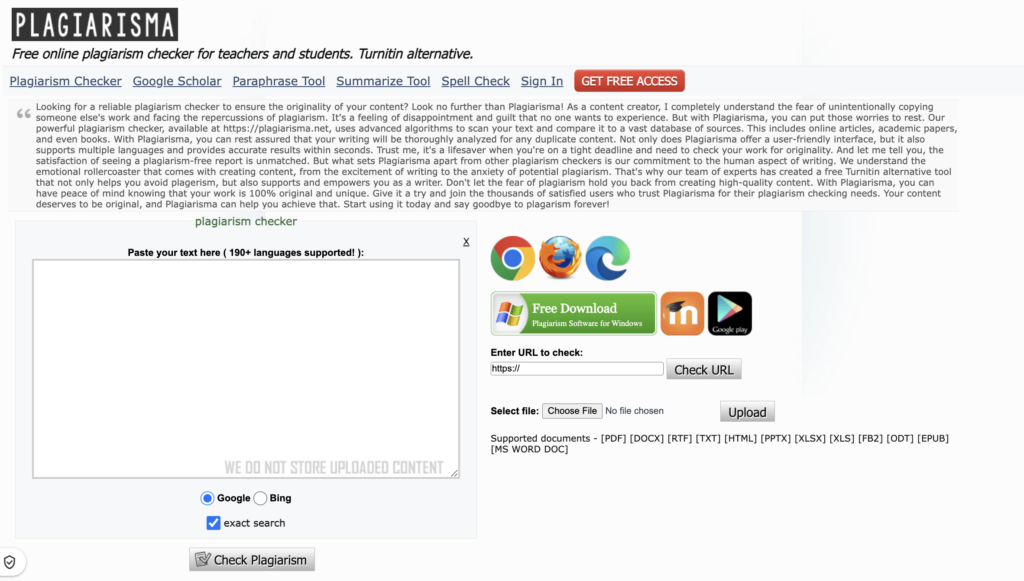
For those seeking a multilingual plagiarism checker, Plagiarisma is an excellent choice. It supports over 190 languages and provides both free and paid versions.
Plagiarisma allows users to input text in various ways: by uploading documents, entering URLs, or directly pasting text into the tool. Once submitted, it compares the text against sources such as books, websites (with options to use Google or Bing), and academic papers.
The free version permits users to conduct up to three plagiarism checks daily. Alternatively, upgrading to a Premium membership offers additional features, including a Synonymizer for sentence restructuring using synonyms, a Similarity Checker for document comparisons, and unlimited plagiarism checks.
Cost:
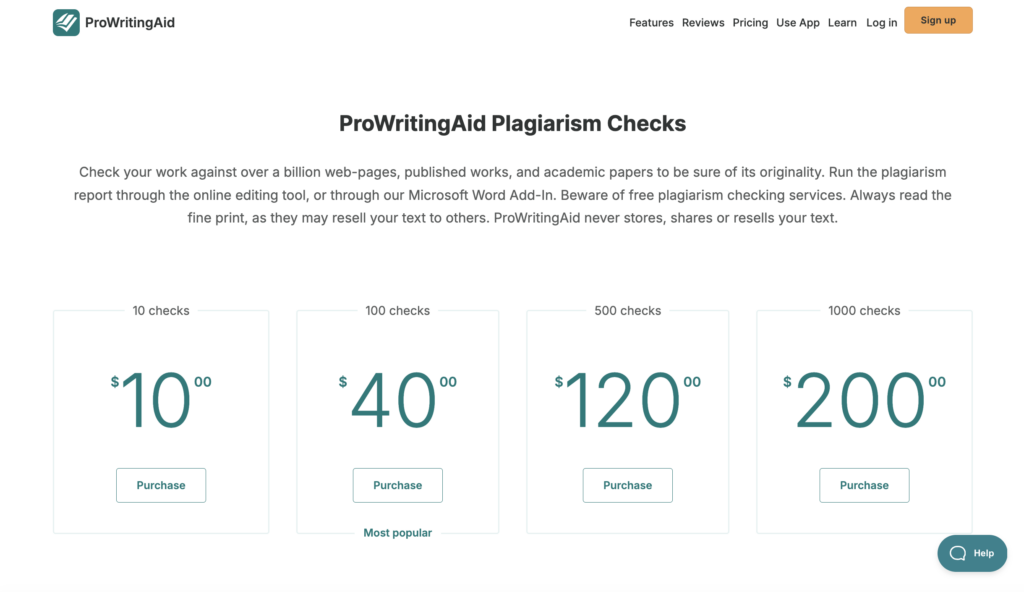
Similar to Grammarly, ProWritingAid is an AI-driven writing assistant that analyzes your text and provides suggestions for improvement. It also includes a useful plagiarism checker, though it does not offer a free version, it remains quite affordable.
ProWritingAid’s plagiarism detection tool can compare your text (up to 2,000 words) against a vast array of sources, including online databases, periodicals, and websites.
The tool identifies directly copied content and provides similarity percentages to highlight areas requiring better paraphrasing or proper citation.
You can conduct your plagiarism check using ProWritingAid’s online editing tool or utilize its Microsoft Word Add-In.
Unlike some subscription-based models, ProWritingAid charges based on the number of checks you perform, making it cost-effective if you have a specific number of documents to review.
Cost:
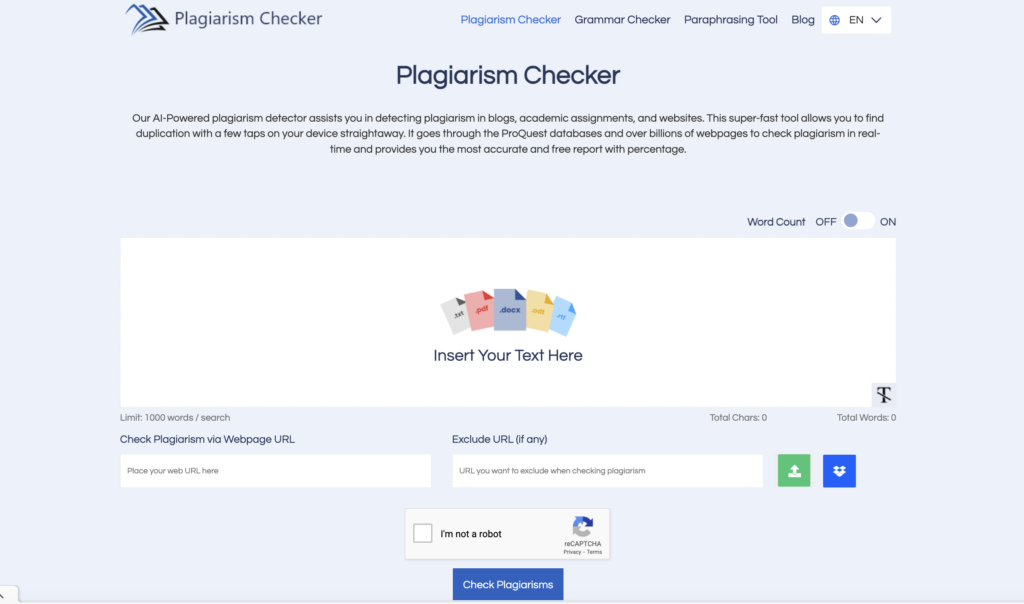
Plagiarism Checker is a user-friendly tool designed for straightforward plagiarism detection, available for free and easy to navigate. It’s an excellent choice if you need a quick and uncomplicated solution.
The tool features a simple interface where users can input text directly into the web-based editor, provide a URL, or upload a document. It also allows you to specify URLs to exclude from the check, which is useful for ignoring specific pages on your site temporarily.
Plagiarism Checker scans your text against blogs, websites, and academic papers, presenting the results as a percentage of detected plagiarism. It supports multiple operating systems including Mac, Windows, and Android, and accepts various file formats such as .rtf, .pdf, .docx, .odt, and .txt.
Keep in mind that there is a word limit of 1,000 words per check. Additionally, the tool includes a grammar checker and word counter, with the option to download the generated reports.
Cost:
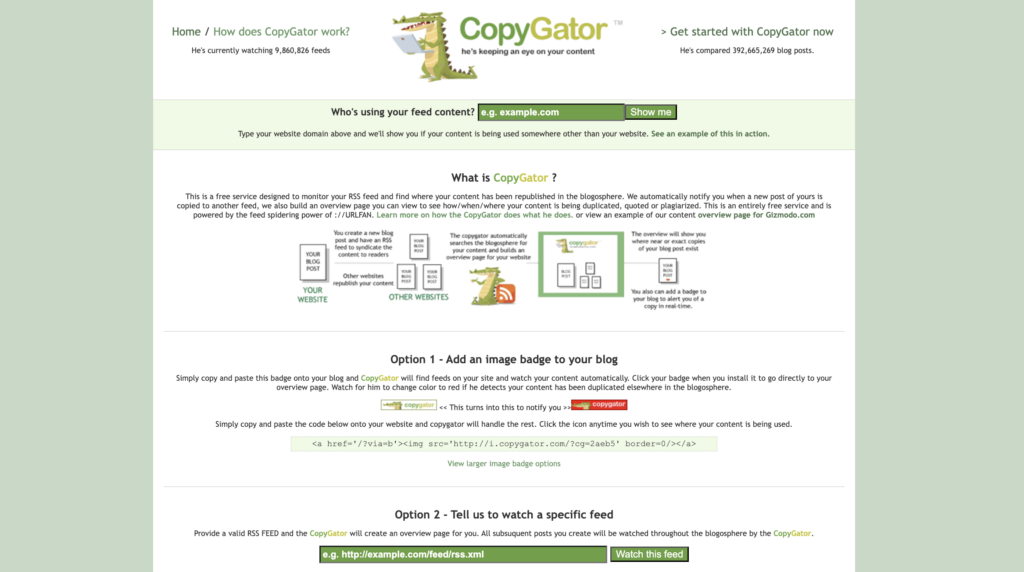
CopyGator is a free service designed to assist bloggers and content creators in monitoring and identifying duplicate versions of their content across other blogs or websites.
The service operates by monitoring your website’s RSS feed to detect instances where content has been republished elsewhere. It automatically notifies you if it finds instances of plagiarism or quoted content.
There are two primary methods for utilizing CopyGator:
Cost:
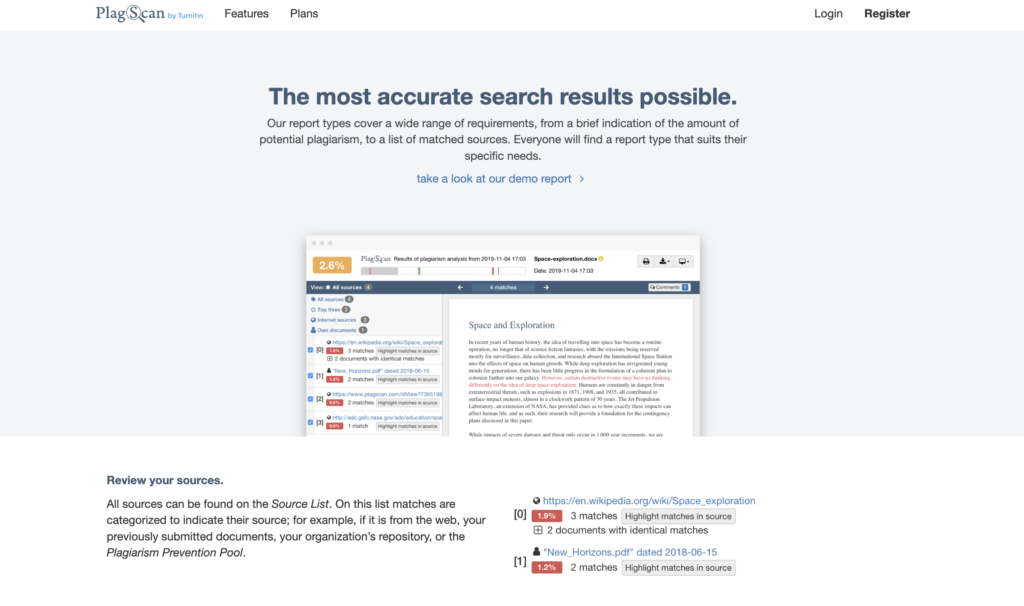
PlagScan is a robust plagiarism detection tool highly favored among academic institutions and professional writers. Notably, there is no free version available for this tool.
PlagScan scrutinizes your text against an extensive database comprising websites, academic resources, and journals to identify instances of plagiarism. It generates a detailed report that provides insights into the findings.
Each report includes a PlagLevel score, which indicates the extent of duplicate text within the document. It uses color-coded highlighting to distinguish different types of matches:
PlagScan also provides a list of sources that match your document, aiding in proper citation. Additionally, you can compare two documents side-by-side to detect similarities. The tool supports a wide range of file formats, and it ensures the security of your data.
Cost:
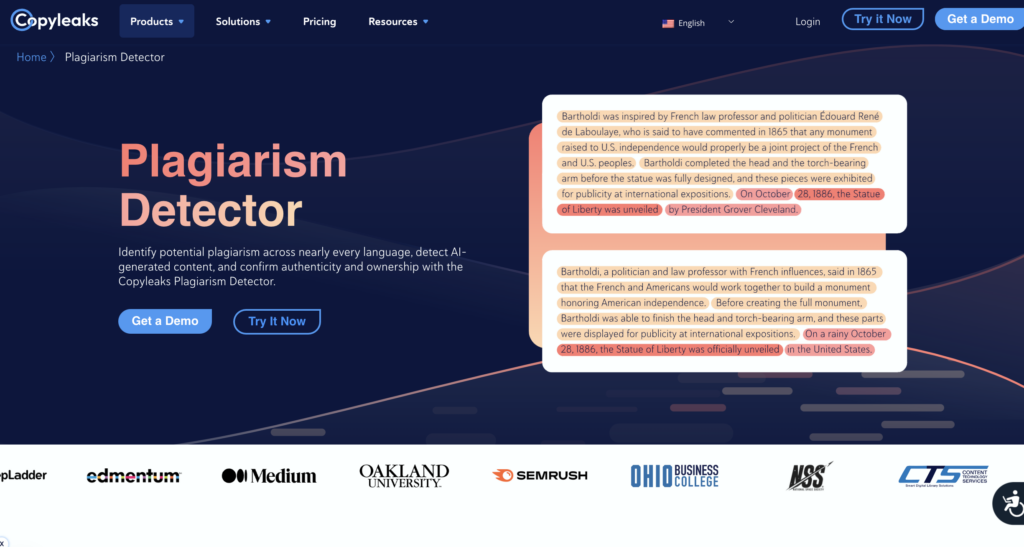
Copyleaks stands out as an advanced plagiarism detection tool widely favored by businesses, educational institutions, and individuals worldwide.
According to Copyleaks, it employs advanced AI technology to detect plagiarism across more than 100 languages, including paraphrasing, plagiarism in programming code, and even AI-generated plagiarism. Each scan compares content against a vast repository, including 60 trillion websites, over 16,000 journals, more than 1 million internal documents, and 20+ code data repositories.
The tool features a highly intuitive interface where users can select various file types for scanning—such as text, documents, code, or URLs. Additionally, the “compare” option allows users to analyze two documents or URLs side by side.
A notable feature of Copyleaks is its capability to schedule recurring scans, automating the detection of duplicate content at regular intervals. It also offers seamless API integration for easy implementation.
Cost:
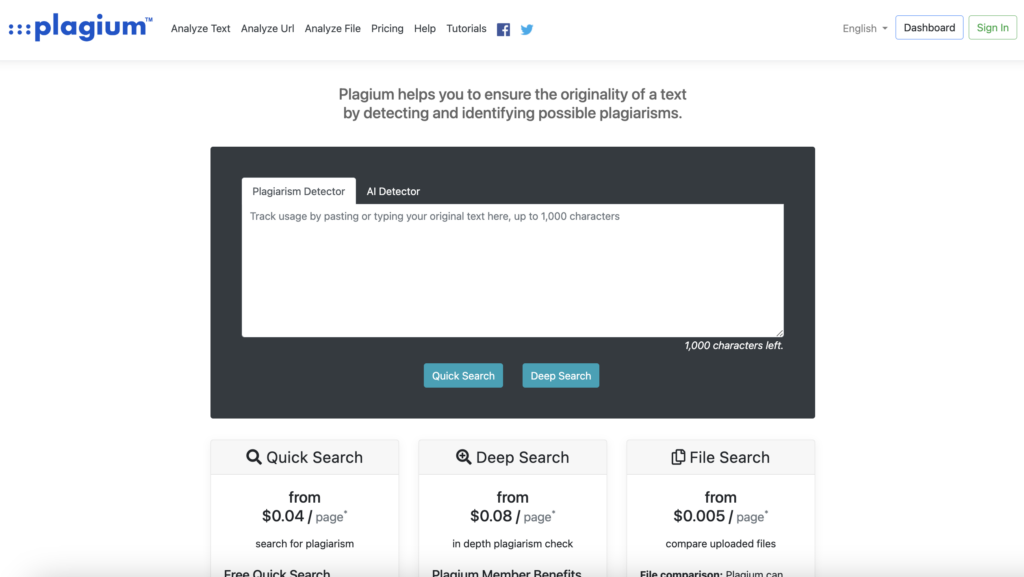
Plagium is an excellent option for those seeking a straightforward and affordable plagiarism checker. It utilizes a simple web-based text box and provides both “quick search” and “Deep Search” functions. The Deep Search feature allows for a more thorough examination and the ability to scan larger documents.
The quick search is free and accommodates up to 500 characters, although there appears to be a limit on the number of quick searches allowed. To access the Deep Search, creating an account is necessary, with searches starting at $0.08 per page using Plagium’s credits system.
As a member, you can upload various document types, including PDFs. Plagium also integrates seamlessly with Google Drive and offers a Google Docs Add-on for enhanced convenience.
Cost:
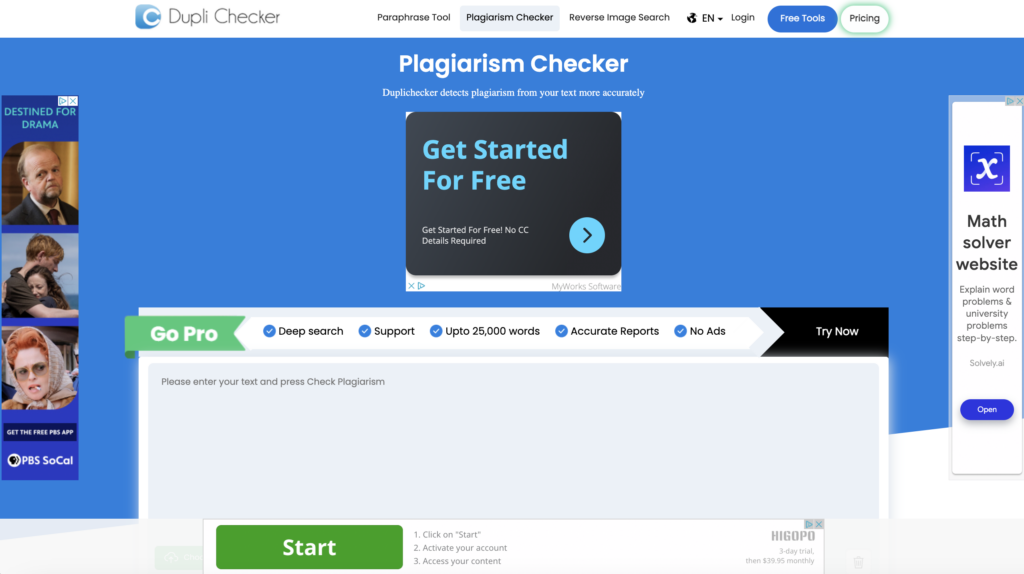
Looking for a free and user-friendly plagiarism checker that supports up to seven languages and accepts various file formats? Dupli Checker might be the right choice for you.
Dupli Checker features a straightforward interface that simplifies the process of scanning your documents for plagiarism. You can either paste your text directly onto the website or upload files from your computer, Dropbox, or Google Drive. Similar to other tools on this list, Dupli Checker allows you to specify URLs for checking and exclude up to five URLs from the scan.
The tool emphasizes 100% privacy, assuring users that it does not store any submitted documents. It generates a detailed report that highlights duplicate content, provides a percentage rating of uniqueness, and identifies grammar issues among other features.
Cost:
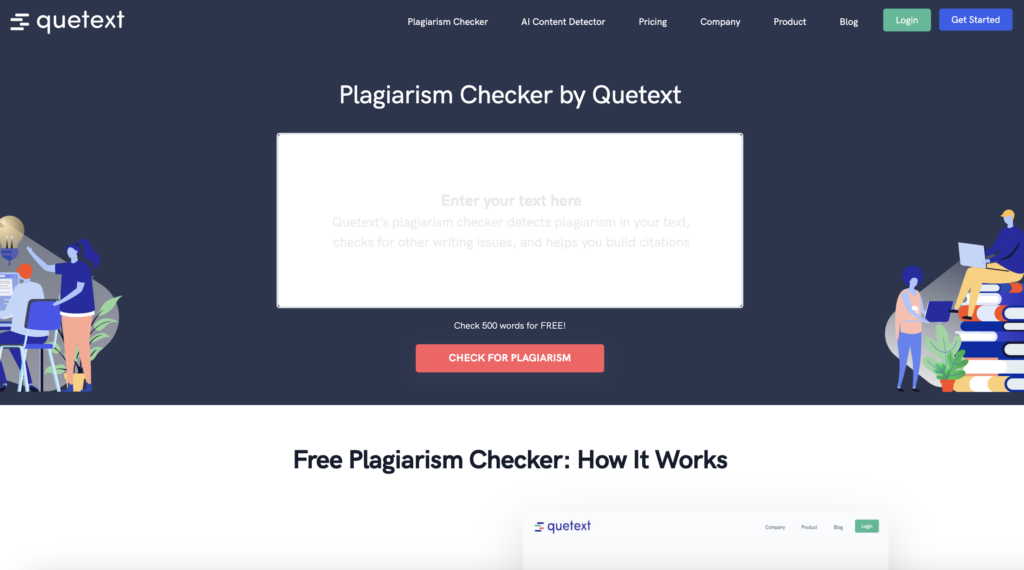
Quetext has gained popularity as a reliable plagiarism detection tool, known for its user-friendly interface and useful features designed to detect plagiarism effectively.
To use Quetext, simply input your text into the web-based box and click “Check for plagiarism.” Utilizing its DeepSearch™ Technology, which employs a machine-learning algorithm, Quetext scans your text against billions of sources on the internet to identify instances of plagiarism.
The tool generates a detailed report that includes a plagiarism score, highlighting both exact matches and near matches to existing text. Its ColorGrade™ feedback feature uses different colors to distinguish between exact match copies and “fuzzy” matches (close matches), making it easier to identify potential instances of plagiarism.
Quetext also offers a “Cite Source” feature, facilitating the creation of citations in Chicago, MLA, and APA formats.
Cost:
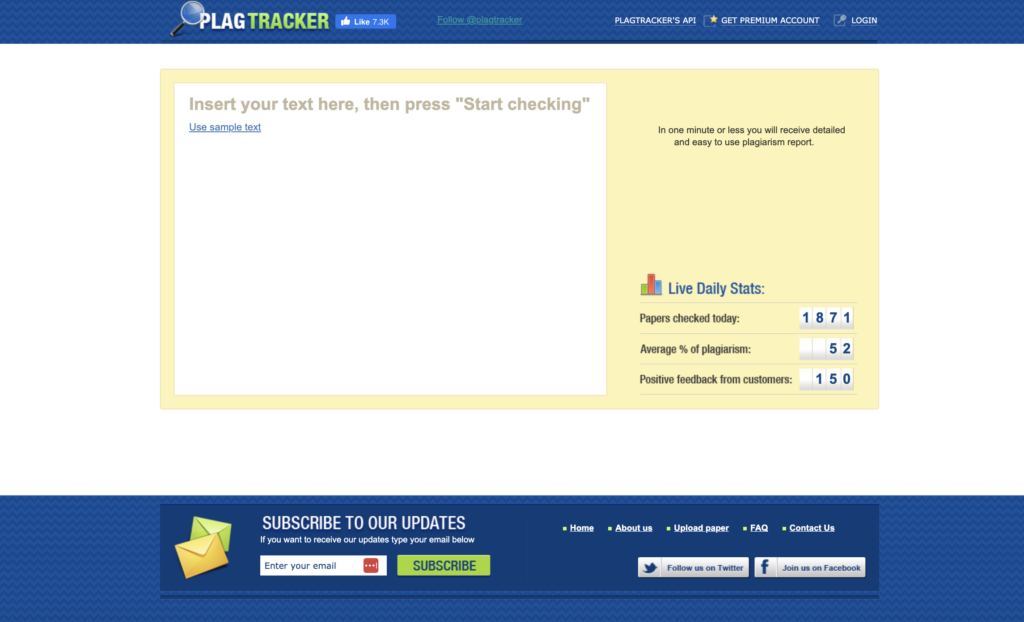
PlagTracker is an online plagiarism detection tool that prides itself on being “the most accurate plagiarism checking service.” It caters to students, teachers, publishers, and website owners, scanning text against a vast database of over 14 billion webpages and “more than 20 million academic works.”
Using PlagTracker is simple: users upload their document, which the tool then scans to produce a detailed report. This report indicates the percentage of plagiarized content in the document and highlights specific sections with identified sources.
The tool supports multiple languages, including English, German, French, Romanian, Spanish, and Italian, enhancing its versatility. PlagTracker offers a free version with a 5,000-word limit for users, and for unlimited access, users can opt for a Premium membership.
Cost:
And there you have it: Copyscape isn’t the only option when it comes to plagiarism detection tools.
The tools mentioned above offer excellent alternatives tailored to various needs, whether you seek affordability and simplicity or a comprehensive AI-powered writing assistant.
For any content creator, maintaining originality and uniqueness is crucial, and these tools can certainly aid in achieving that goal.
However, it’s essential to acknowledge that these tools have limitations. Employing additional checks and balances is advisable to ensure the integrity of your work.
By avoiding plagiarism, you safeguard your credibility and reputation, and you enhance your website’s traffic. Moreover, it helps you steer clear of potential legal issues.
Original news from SearchEngineJournal